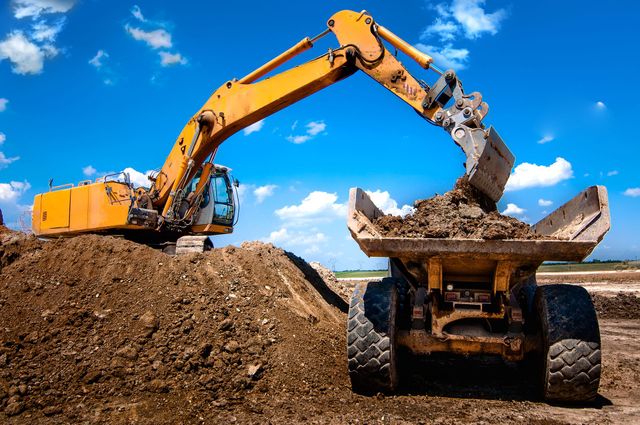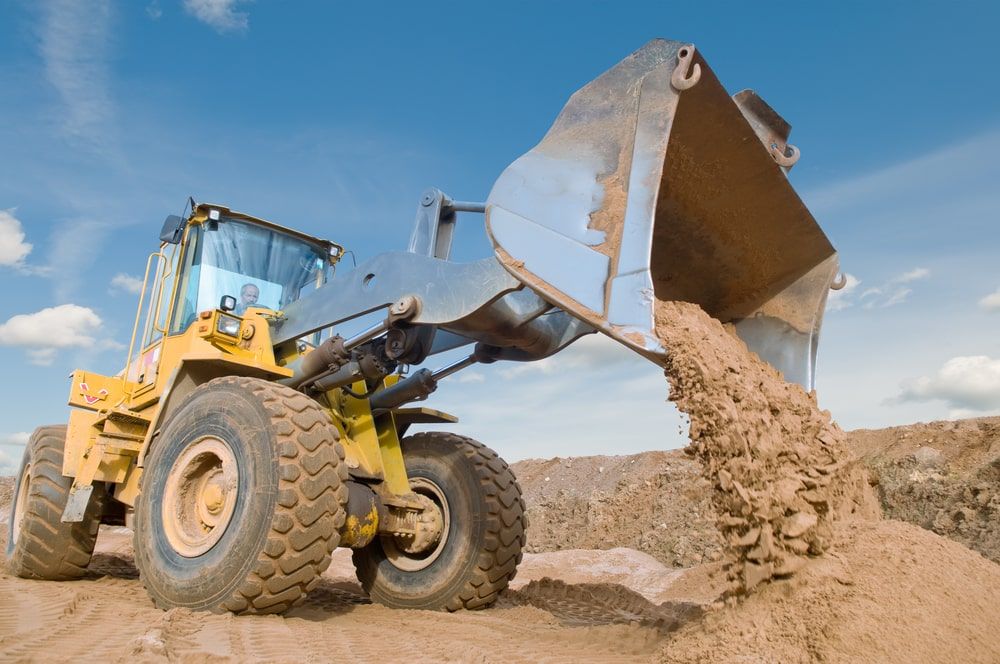Budget Friendly Lancaster Excavation - Quality Excavation at Competitive Rates
Budget Friendly Lancaster Excavation - Quality Excavation at Competitive Rates
Blog Article
Revealing the Art of Excavation: Pro Tips for Safe and Efficient Digging
In the realm of excavation, the proficiency of secure and effective digging is an art form that calls for knowledge, accuracy, and adherence to recognized practices. As soil is transformed and planet is moved, the details of excavation disclose themselves, demanding a keen understanding of tools, dirt structure, security procedures, and environmental factors to consider. The expertise required to navigate these components efficiently can mean the difference between an effective excavation job and a potential calamity. By deciphering the layers of this detailed process, a globe of insights and strategies waits for those seeking to raise their excavation skills to brand-new heights.
Value of Correct Devices
To guarantee the safety and performance of any type of excavation project, using the suitable equipment is vital. Excavation tasks vary in scope and intricacy, varying from little household landscaping work to large building and construction tasks.
These flexible devices come in various sizes to suit different project demands. Small excavators are optimal for smaller sized jobs, while larger excavators take on a lot more substantial projects efficiently.
Aside from excavators, other important devices includes dump trenchers, vehicles, and excavators. Dispose vehicles are vital for removing and moving excavated materials, while trenchers are utilized for digging deep and slim trenches. Bulldozers master tasks that need pressing large quantities of dirt or particles. By buying the proper devices, excavation projects can be finished safely, promptly, and with precision.
Comprehending Soil Structure
A detailed grasp of soil make-up is essential for executing excavation jobs with precision and safety and security. Understanding the various kinds of dirt is critical as it directly affects excavation approaches, devices option, and overall task performance.
Sand bits are the biggest and supply great water drainage yet supply little communication. Silt fragments are smaller than sand however larger than clay, offering modest drain and communication. Clay bits are the smallest and supply high communication but poor drainage. Raw material, such as decomposing plant product, affects dirt fertility and security.
Before starting excavation, carrying out soil examinations to identify its composition and characteristics is vital. This information aids in selecting the appropriate tools, carrying out safety and security steps, and establishing excavation techniques tailored to the details dirt problems - lancaster trenching. By understanding dirt make-up, excavation experts can enhance task outcomes while ensuring security and adherence to best methods
Security Measures and Methods
Comprehending soil make-up is the cornerstone whereupon security steps and methods for excavation projects are constructed, guaranteeing the well-being of employees and the success of the venture. When it comes to security throughout excavation, there are several crucial actions that should be applied to mitigate dangers and prevent mishaps.
Firstly, prior to any kind of digging starts, a complete evaluation of the site must be carried out to determine any kind of potential threats such as below ground utilities, unstable dirt problems, or nearby structures that might posture a risk. It is important to have an experienced person oversee the excavation procedure to make certain that all safety and security procedures are complied with purely.
Moreover, all employees included in the excavation should be properly educated in risk-free excavating methods and the correct operation of devices. By sticking to these safety and security steps and protocols, excavation projects can be completed efficiently and without event.
Effective Excavation Preparation
When starting an excavation job, thorough preparation is necessary to guarantee performance, security, and successful end results. Effective excavation preparation involves numerous vital steps that are critical for the smooth implementation of the project. The primary step is to perform a comprehensive site analysis to identify any type of potential risks, such as below ground utilities or unpredictable soil conditions. This details is essential for establishing a thorough excavation plan that includes precaution and take the chance of reduction techniques.
As soon as the site assessment is total, the following step is to produce a clear timeline and timetable for the excavation activities. This includes determining the series of jobs, devices demands, and manpower appropriation. Proper organizing assists prevent hold-ups and makes certain that the task remains on track.

Furthermore, communication amongst all employee is extremely important during the planning stage. Clear regulations, normal updates, and effective sychronisation are necessary for an effective excavation job. By investing effort and time in meticulous planning, excavation teams can significantly boost efficiency, minimize threats, and attain effective outcomes.

Managing Environmental Factors To Consider
With increasing emphasis on environmental sustainability in building and construction techniques, taking care of ecological factors to consider has actually ended up being an important element of excavation tasks. Excavation activities have the possible to impact the surrounding environment via dirt disintegration, sediment runoff, environment disturbance, and contamination of water sources. To minimize these risks, it is necessary to apply best techniques that focus on environmental management.

Moreover, appropriate waste monitoring is essential to avoid dirt and water contamination. lancaster trenching Carrying out procedures for the disposal of unsafe products, recycling of waste materials, and decreasing the usage of harmful chemicals can dramatically minimize the environmental impact of excavation jobs. By incorporating these techniques right into excavation preparation and execution, construction firms can ensure that their projects are not just risk-free and effective yet additionally environmentally liable.
Final Thought
In conclusion, mastering the art of excavation requires an extensive understanding of proper tools, dirt structure, safety and security steps, and efficient preparation. By adhering to these standards and taking into consideration environmental elements, excavations can be performed securely and successfully. It is important to focus on safety and security and productivity in every digging job to guarantee successful outcomes.
As dirt is turned and earth is moved, the ins and outs of excavation reveal themselves, requiring an eager understanding of tools, dirt composition, safety and security methods, and ecological considerations.To make certain the safety and efficiency of any type of excavation job, using the ideal devices is vital.A comprehensive understanding of soil make-up is basic for performing excavation tasks with precision and safety and security. Comprehending the different types of soil is vital as it straight affects excavation techniques, devices option, and total job effectiveness. By comprehending dirt make-up, excavation experts can improve task outcomes while ensuring safety and security and adherence to finest techniques.
Report this page